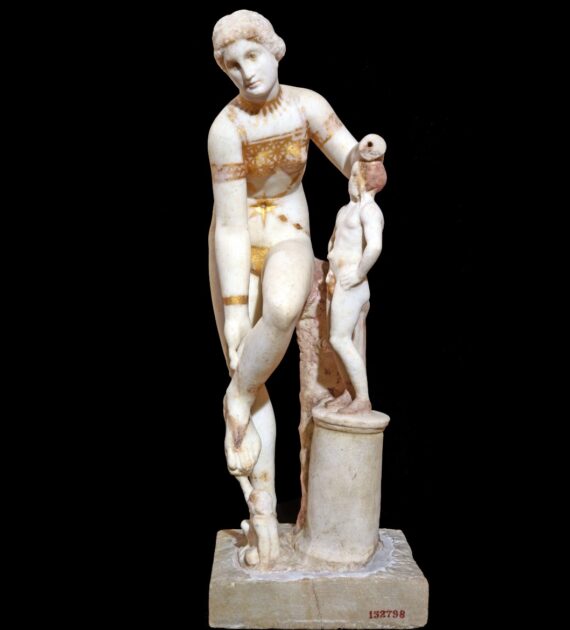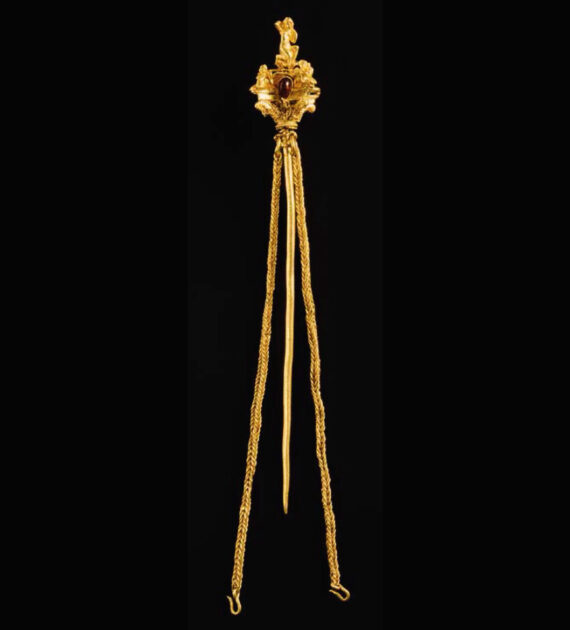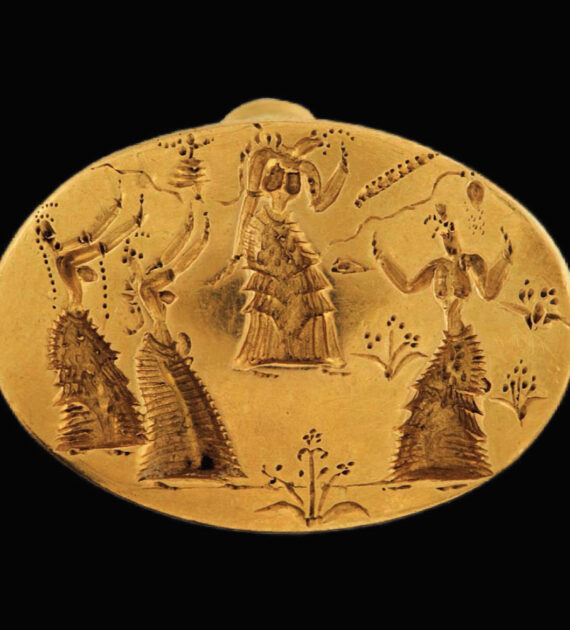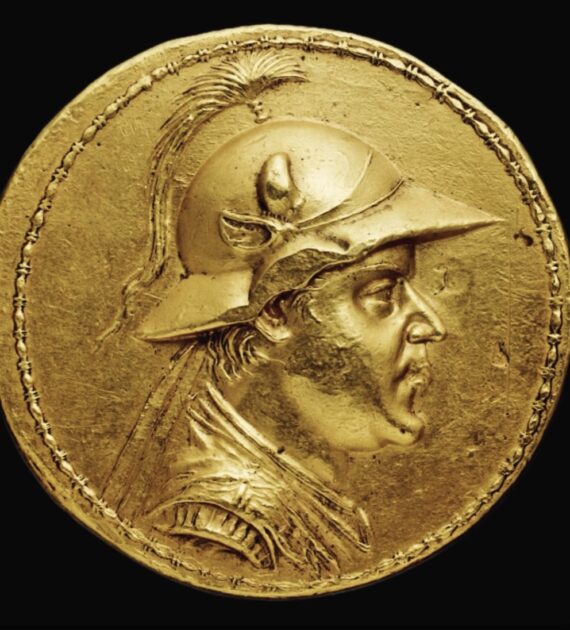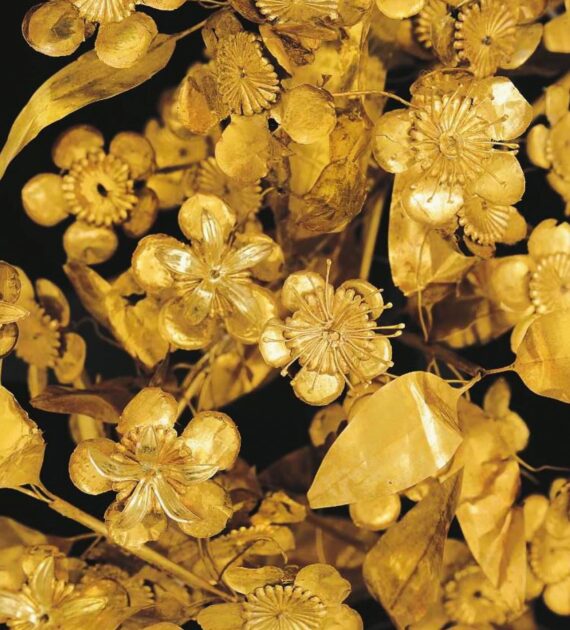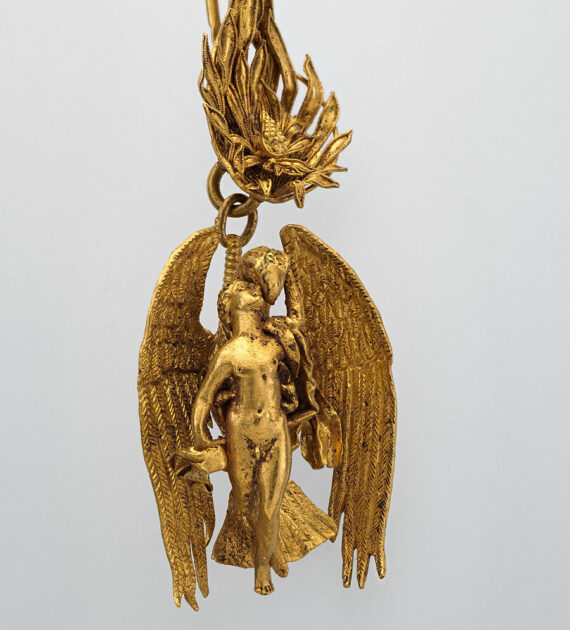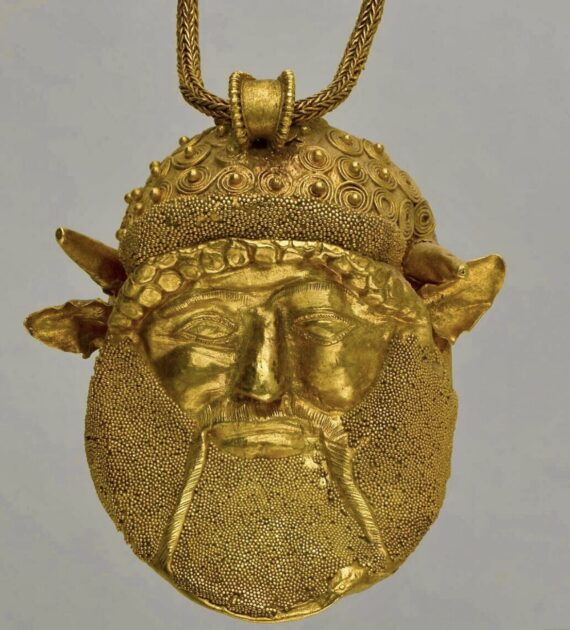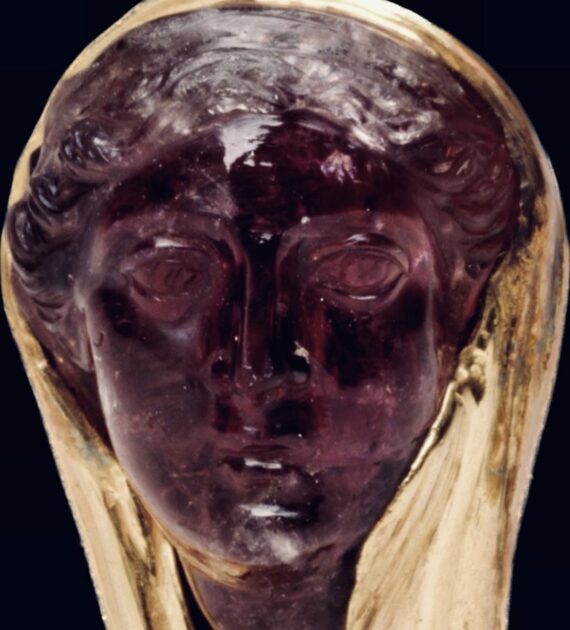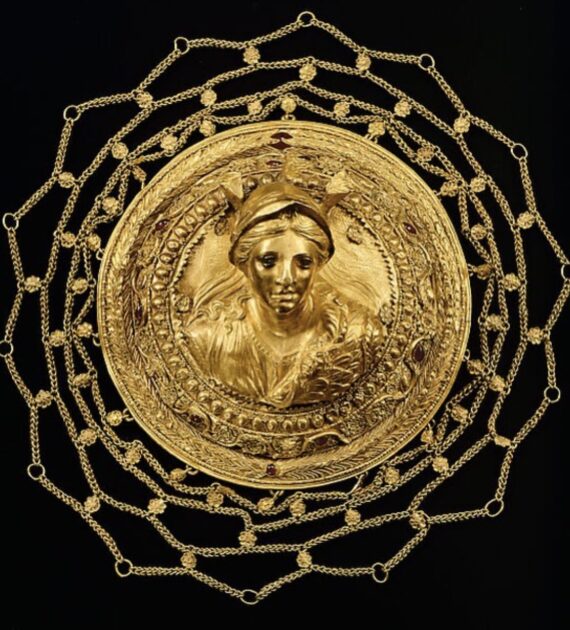A Silenos in His Cups…
Yet another outrageous thing to find at the bottom of your wine cup! And not the worse place for an aging silenos at the end of his career… It’s a gorgeous but small medallion (silver, chased and gilt) that would have sat in the bottom of a drinking cup and rather small at 8.5 cm



